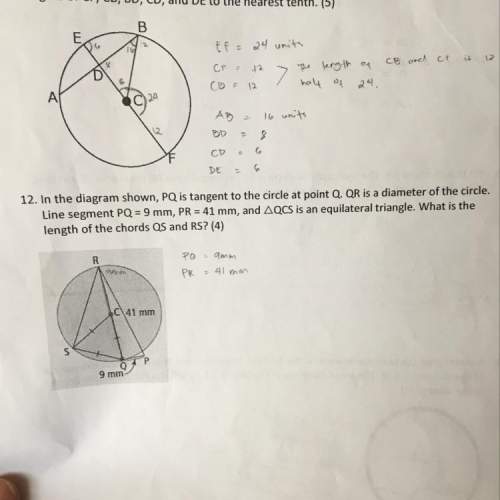
Mathematics, 17.09.2019 18:10, chickenhead123
For the given functions f and g, complete parts (). for parts (), also find the domain. f left parenthesis x right parenthesis equals x minus 4f(x)=x−4; g left parenthesis x right parenthesis equals 9 x squaredg(x)=9x2 (a) find (fplus+g)(x).(fplus+g)(x)equals=not hing (simplify your answer.) what is the domain of fplus+g? select the correct choice below and, ifnecessary, fill in the answer box to complete your choice. a. the domain is startset x vertical line nothing endset{x }. (use integers or fractions for any numbers in the expression. use a comma to separate answers as needed.) b. the domain is startset x vertical line x is any real number endset{x x is any real number}.(b) find left parenthesis f minus g right parenthesis left parenthesis x right parenthesis(f−g)(x). left parenthesis f minus g right parenthesis left parenthesis x right parenthesis(f−g)(x)equals=nothing (simplify your answer.) what is the domain of f minus gf−g? select the correct choice below and, if necessary, fill in the answer box to complete your choice. a. the domain is startset x vertical line nothing endset{x }. (use integers or fractions for any numbers in the expression. use a comma to separate answers as needed.) b. the domain is startset x vertical line x is any real number endset{x x is any real number}.(c) find (ftimes•g)(x). (ftimes•g)(x)equals=nothing (simplify your answer.) what is the domain of ftimes•g? select the correct choice below and, if necessary, fill in the answer box to complete your choice. a. the domain is startset x vertical line nothing endset{x }. (use integers or fractions for any numbers in the expression. use a comma to separate answers as needed.) b. the domain is startset x vertical line x is any real number endset{x x is any real number}. (d) find left parenthesis startfraction f over g endfraction right parenthesis left parenthesis x right parenthesis f g(x). left parenthesis startfraction f over g endfraction right parenthesis left parenthesis x right parenthesis f g(x)equals=nothing (simplify your answer.) what is the domain of startfraction f over g endfraction f g? select the correct choice below and, if necessary, fill in the answer box to complete your choice. a. the domain is startset x vertical line nothing endset{x }. (use integers or fractions for any numbers in the expression. use a comma to separate answers as needed.) b. the domain is startset x vertical line x is any real number endset{x x is any real number}. (e) find (fplus+g)(33).(fplus+g)(33)equals=n othing (type an integer or a simplifiedfraction.) (f) find (fminus−g)(44).(fminus−g)(44)equals =nothing (type an integer or a simplifiedfraction.) (g) find (ftimes•g)(22).(ftimes•g)(22)equals =nothing (type an integer or a simplifiedfraction.) (h) find left parenthesis startfraction f over g endfraction right parenthesis left parenthesis 1 right parenthesis f g(1). left parenthesis startfraction f over g endfraction right parenthesis left parenthesis 1 right parenthesis f g(1)equals=nothing (type an integer or a simplifiedfraction.)

Answers: 1
Other questions on the subject: Mathematics



Mathematics, 21.06.2019 15:30, gui00g7888888888888
Match each equation with the operation you can use to solve for the variable. subtract 10. divide by 10. divide by 5. subtract 18. multiply by 10. add 18. add 10. multiply by 5. 5 = 10p arrowright p + 10 = 18 arrowright p + 18 = 5 arrowright 5p = 10 arrowright
Answers: 3
Do you know the correct answer?
For the given functions f and g, complete parts (). for parts (), also find the domain. f left paren...
Questions in other subjects:

Mathematics, 10.09.2020 01:01

Mathematics, 10.09.2020 01:01




Biology, 10.09.2020 01:01


Mathematics, 10.09.2020 01:01

Mathematics, 10.09.2020 01:01

Chemistry, 10.09.2020 01:01







